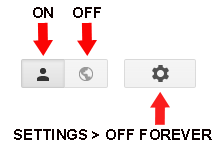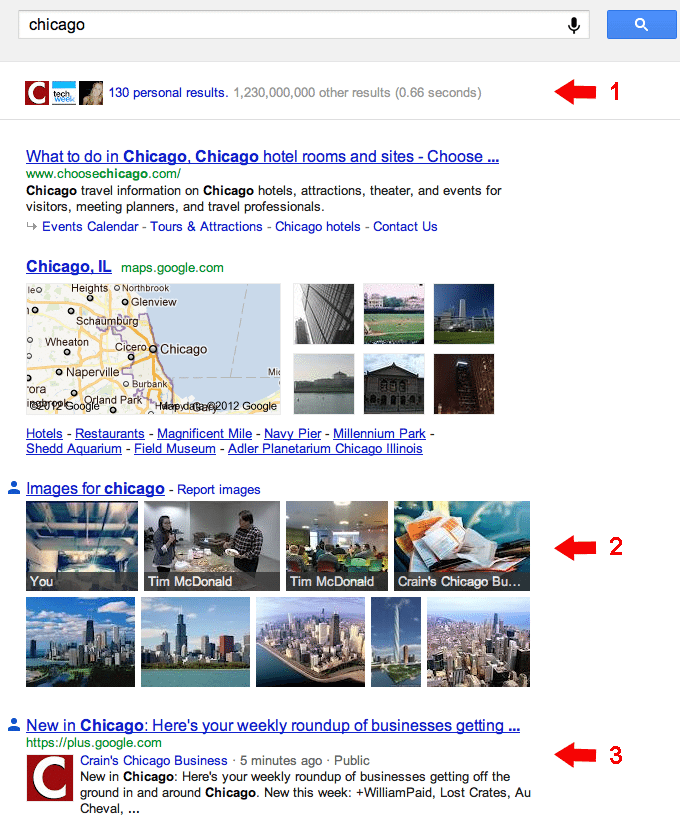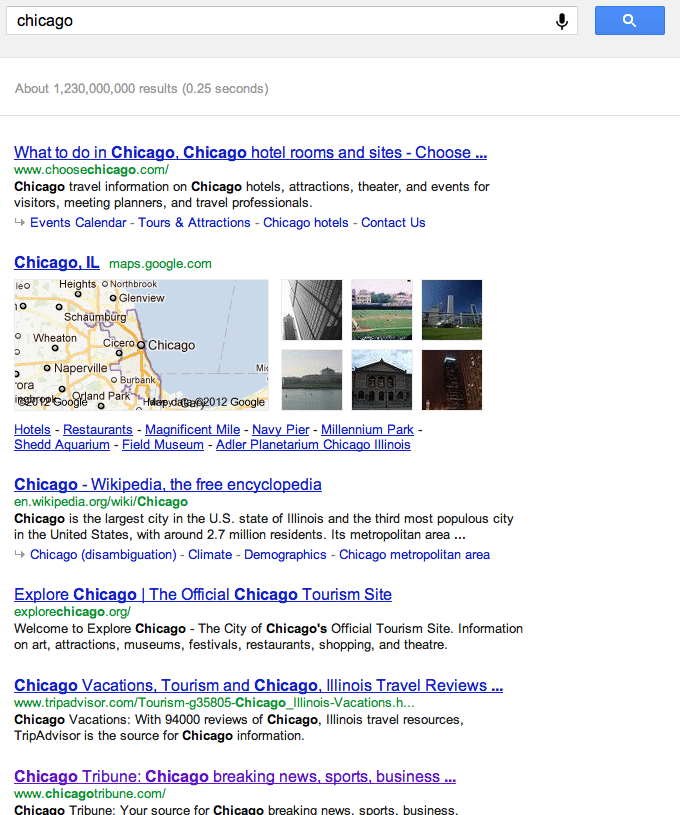Back in January when Google Search Plus Your World debuted, the SEO community spiraled into a fear-mongering frenzy. Meanwhile, everyday searchers scratched their heads in confusion, wondering why their friends’ faces started popping up in organic results.
But amid the outcries of “search will never be the same!” and “what’s Joe doing on my Google results page?” we were busy taking an objective look at the implications of Google Search Plus Your World (or GSPYW if you prefer super secret SEO speak).
Google Search Plus Your World
Google’s mission, as they regularly remind us, is to make search more relevant for YOU. Whether or not Google’s frequent updates actually make search better – well, that’s subjective. And that’s also why they included this handy-dandy button to turn GSPYW off.

The concept is such: GSPYW integrates the search and social experience by making your Circles’ online actions more relevant in your search results. For example, when I search “Chicago” with GSPYW turned on, I get content from Crain’s, Techweek, my coworker and other G+ connections who at one time or another have mentioned, +1’d or shared something concerning Chicago. This comes in the form of 1) personal results that have something to do with the topic I searched, 2) relevant images from my Google+ Circles, and 3) relevant content that my circles have shared.

When I switch GSPYW off, the results are a bit different in that they don’t include any input from my G+ network. But it’s not just images and icons that are missing; beyond the top-ranked link, the results are completely different. I’d classify this group of results as more “general” with a smattering of links to Wikipedia, cultural organizations and trip planners – the stuff you’d expect to see from a simple Google search.

The +1 Button
The effect of the +1 button is essentially the same as above. When I search “Community Manager” I get a page full of results, but what sticks out to me is the link with a familiar face next to it. Google’s assumption (and an accurate one at that) is that we as humans are more likely to trust something that a friend or connection recommends.

GSPYW indirectly leads to better page ranking because users are more likely to click on content that the people that they trust (friends, influencers, colleagues) share or endorse. Indirect or not, the SEO implications of GSPYW can’t be ignored.
Google+ and your organization
Theoretically, the more employees you have engaging on Google+, the more influence you have in search. As we see it, there are two key advantages to having employees promote content on Google+: numbers and trust.
1. The numbers game
It’s simple mathematics. One brand can only reach so many people. But if said brand has 25 employees, it can extend that reach to the entire G+ network of each of those employees. That can quickly add up to lot of people.
In a quick, completely unscientific experiment I took a look at the Circle power of several lonelybrand team members.
# of people that have lonelybrand in circles: 207
# of people that have 5 selected teammates in circles: 319
. . . and that’s just five select team members. What if we counted everyone? What if we worked at a company with 2000 employees? Could encouraging a strong G+ program at a large company actually affect search results for an entire industry?
2. People trust people
Users have most likely developed a sense of trust within their industry and G+ Circles. A message coming from an actual person carries a certain level of authenticity that might be lost or ignored when coming from a brand.
Barriers to privacy concern employers
Is a company-wide Google+ engagement policy realistic?
To shed some light on the scenario, we spoke with William Reigle, Senior Systems Administrator at local funded startup. William recently migrated his team of 100+ employees over to Google Apps, providing email and a variety of other features in the cloud.
Upon installing Google Apps Will decided to disable the G+ feature for all employees. Why take this approach from the get go? “Google+ is the only Google Apps feature that cannot be restricted to internal employees only,” Will said. “There is concern that employees may mistakenly share with the “Public” via Google+.”
It’s enough to send any company running in the opposite direction. Simply put, Google+ may not be an option for some companies, and that begs the question: is it a competitive disadvantage to disregard Google+?
And as Will pointed out, ranking high on Google is not everyone’s top concern – or at least it’s not that simple. Before executing a Google+-centric SEO strategy, it’s important to have that talk about what your brand is really looking to accomplish.
World domination!
All of this begs the question in the back of many internet users’ mind: is what Google is doing really fair?
The social realm is just one more venue for Google to dominate, and one more advantage they will have over . . .well, the rest of the Internet. Microsoft Exchange can’t offer search and social components, and with the introduction of Google+ and GSPYW, the Google Apps package suddenly becomes more attractive.
And on another level, is this fair for companies themselves? When it comes to the employee influence factor, a large company like Ford has a huge network of people to influence social and search. Where does that leave the little guys in the battle for search and social relevancy?
In the end, Google+ is not the answer to all of your digital woes. Nor is Google itself, for that matter. It’s a strategy decision to be made on an individual basis. At the end of the day, adding value through unique, timely and interesting content is the best SEO trick in the book.
What are your thoughts? Is building a Google+ army of endorsers a legitimate strategy? Is Google in phase three of taking over the Internet entirely? Share your thoughts with us on Twitter or Google+.